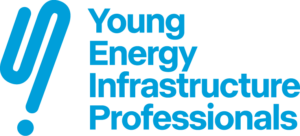
Equipping the young professionals of tomorrow with the skills to build, maintain, and transform Canada’s energy infrastructure is a core value to the Young Pipeliners Association of Canada, which is why we’ve paired our industry professionals with a capstone design team. In partnership with CEPA, Young Pipeliners has sponsored an interdisciplinary design project at Queen’s University with the Faculty of Engineering and Applied Science in the APSC 480 course. APSC 480 is a multidisciplinary industry-partnered two-term capstone design experience that provides engineering students with the challenge of an immersive real-world engineering project in partnership with an industry client.
Young Pipeliners has assembled a team of four industry professionals (Lindsay Drozdiak and Katia Greco from TC Energy, Mohamed Rashid from Inter Pipeline, and Dr. Kshama Roy from Northern Crescent) to partner with three Queen’s University Students – Lucia Beram (Mechanical Engineering Candidate, ’21), Maeve Buchan (Computer Engineering Candidate, ’21) and Emma Selleck (Chemical Engineering Candidate, ’21). We have asked few questions to the students on their experience on this ongoing Capstone project.
What have you learned about the Pipeline industry? What surprised you the most?
Lucia: As a student with no prior Oil and Gas industry experience, I have learned through extensive research and interviews with professionals about the scale of pipeline projects and how they benefit the surrounding communities. It is incredible the number of people involved in a single project from the time the crossing is proposed to when it is in service. The complexity of these projects is overwhelming when you consider the steps taken to minimize the environmental impact, communicate with citizens in the area, study the subsurface, choose a trustworthy contractor, and more. The considerations, as we have learned, are endless and all significant to the success of a project.
What surprised me the most was how welcoming and helpful every contact has been for our group. In addition to the Young Pipeliners team, we have reached out to over 15 different people within the industry. Everyone has voiced their interest and continued support for this project. Receiving constructive feedback and guidance has opened my eyes to the positive environment and opportunities this industry offers.
What are the greatest challenges with designing a pipeline crossing? What resources have helped you the most throughout the project?
Maeve: Designing a pipeline crossing is a multifaceted venture that requires lots of research and technical knowledge. Coming into the design process with no previous knowledge I found the biggest challenge lied with identifying all the requirements to complete a successful crossing. That is equipment, regulations, costs, and technical considerations that need to be made before a crossing can be designed and implemented. Learning how everything fit together and which processes belong to which role was a daunting process in the beginning.
The best resource we have found throughout this project has been industry professionals. We started interviewing individuals very early on in the process and are still seeing lots of valuable ones we would like to meet with. From contractors to drilling mud specialists it has been a great time picking everyone’s brain and listening to their experiences.
Where do you think the biggest opportunities for improvement are in the Pipeline Crossing space?
Emma: From talking to industry professionals and completing research on HDD crossings, we have realized that many issues arise from having limited knowledge of the subsurface conditions. For example, unexpected soil conditions encountered during the drilling process can cause for there to be improper equipment available on-site or may give way for the hole to collapse requiring a new path to be drilled. These are just a few of the many problems that were identified during our interviews that stemmed from the issue of not knowing enough about what is underground. We believe that investing more into the initial ground investigations at the beginning of the project could minimize project risk and potentially save money in the long run.
Another area that was identified to have opportunities for improvement was drilling mud. The transportation cost associated with this mixture can be very large and make up a significant portion of the project cost. We are currently looking into ways to reduce the amount required or to decrease the volume of the mixture on site after it has been used in the drilling process to lower the transportation costs.
Are any of you looking to pursue opportunities in the industry? What are your post-graduation plans? Are there areas of interest (in the industry) that you would be interested in further exploring?

Lucia Beram (Mechanical Engineering Candidate, ’21)
After graduation, I will be joining Toromont CAT as a Management Trainee. I anticipate I will be working with people within the pipeline industry throughout my career as many machines we provide are used in pipeline projects. I have learned so much throughout this project and met so many amazing people. I look forward to networking and going into the industry with an open mind as I start my career.

Maeve Buchan (Computer Engineering Candidate, ’21)
After graduation, I will be joining the Global Banking and Markets group at the Bank of America. Completing this project has opened up my eyes to an industry I had not previously considered, I would be interested in learning more about the intersection of technology and pipelines and how I may be able to contribute with a computer engineering degree.

Emma Selleck (Chemical Engineering Candidate, ’21)
After having the opportunity to work on this project and meet industry professionals, I am interested in starting my career in this field. I enjoyed getting to learn about all the different factors that need to be considered to have a successful project. Additionally, it appears that the industry is very interested in new ideas which pose an exciting opportunity. Getting to be a part of an innovative, open-minded community could lead to an exciting career path.